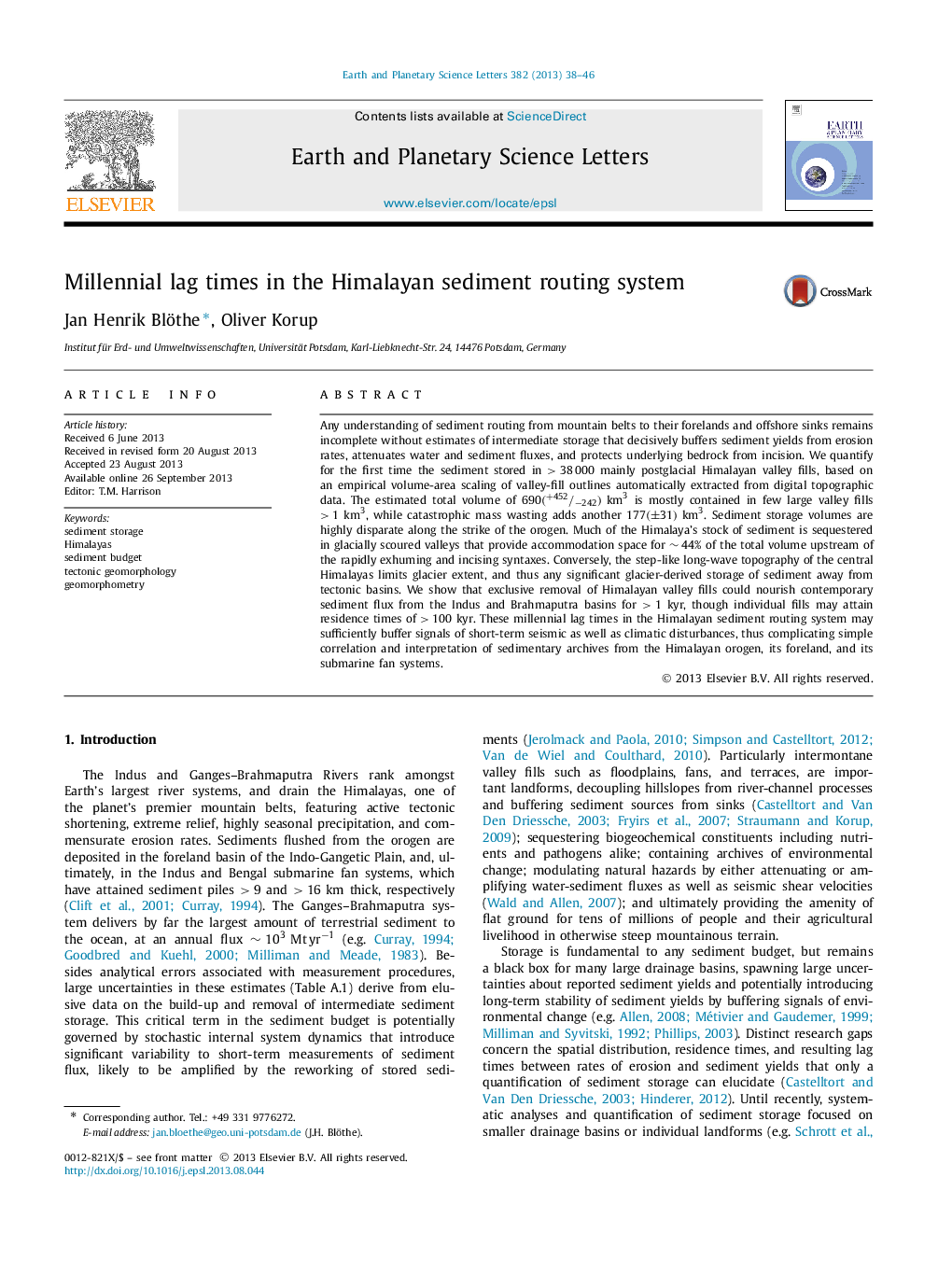| کد مقاله | کد نشریه | سال انتشار | مقاله انگلیسی | نسخه تمام متن |
|---|---|---|---|---|
| 6429959 | 1634774 | 2013 | 9 صفحه PDF | دانلود رایگان |
- First volumetric quantification of sediments stored in Himalayan valley fills.
- Estimated total volume of 690(/â242+452) km3 dominated by few large valley fills.
- More than 85% of total volumes in Indus and Tsangpo stored upstream of syntaxes.
- Median residence times between â¼3 and â¼32 kyr, individual fills persist for >100 kyr.
- Millennial lag times complicate correlating sedimentary archives to climate forcing.
Any understanding of sediment routing from mountain belts to their forelands and offshore sinks remains incomplete without estimates of intermediate storage that decisively buffers sediment yields from erosion rates, attenuates water and sediment fluxes, and protects underlying bedrock from incision. We quantify for the first time the sediment stored in >38000 mainly postglacial Himalayan valley fills, based on an empirical volume-area scaling of valley-fill outlines automatically extracted from digital topographic data. The estimated total volume of 690(/â242+452) km3 is mostly contained in few large valley fills >1 km3, while catastrophic mass wasting adds another 177(±31) km3. Sediment storage volumes are highly disparate along the strike of the orogen. Much of the Himalaya's stock of sediment is sequestered in glacially scoured valleys that provide accommodation space for â¼44% of the total volume upstream of the rapidly exhuming and incising syntaxes. Conversely, the step-like long-wave topography of the central Himalayas limits glacier extent, and thus any significant glacier-derived storage of sediment away from tectonic basins. We show that exclusive removal of Himalayan valley fills could nourish contemporary sediment flux from the Indus and Brahmaputra basins for >1 kyr, though individual fills may attain residence times of >100 kyr. These millennial lag times in the Himalayan sediment routing system may sufficiently buffer signals of short-term seismic as well as climatic disturbances, thus complicating simple correlation and interpretation of sedimentary archives from the Himalayan orogen, its foreland, and its submarine fan systems.
195
Journal: Earth and Planetary Science Letters - Volume 382, 15 November 2013, Pages 38-46
